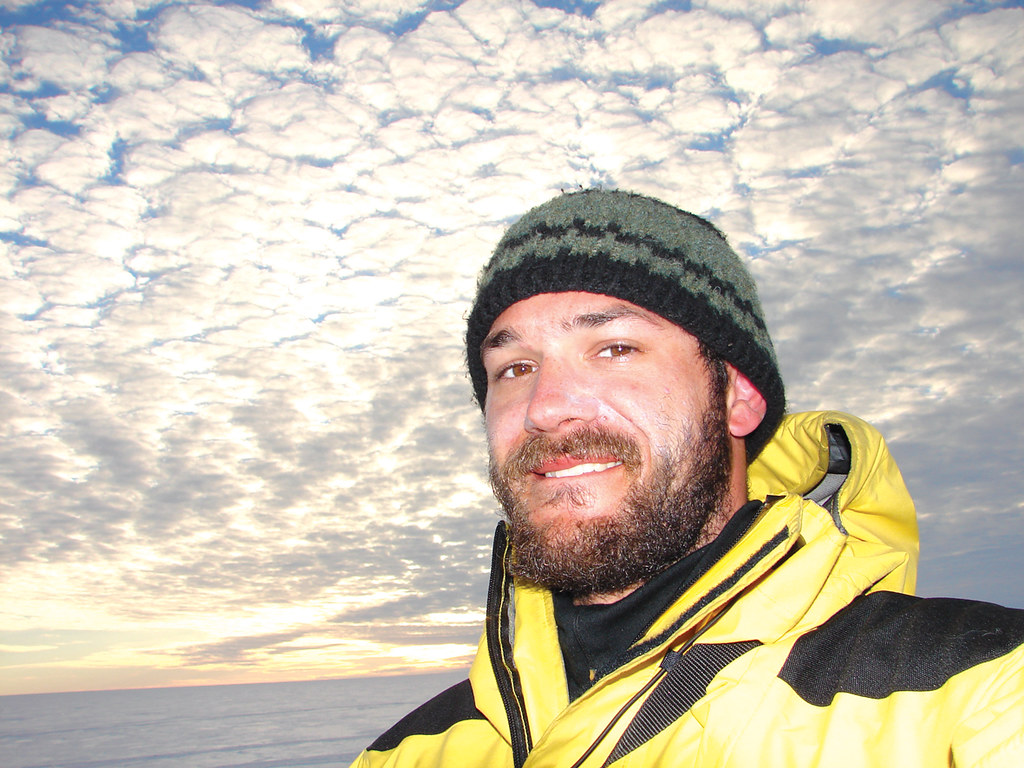26 Dec 2006
Interview: Jim Behrens - The loose tooth
Back at Davis station, I met Jim Behrens. Jim says his job as a scientist has made his life an adventure.
He works for the Scripps Institute of Oceanography in California, and is trying to discover how Antarctica will respond to a warmer world.
I love all the weird and wonderful things I get to do, whether it’s spending a few days hanging out with a group of elephant seals, flying in a helicopter parallel to a giant crevasse, or pooping in a bucket
on an Antarctic ice shelf! (There’s no plumbing on ice shelves — you sit on a metal bucket outside,
exposed to the elements, with the wind whipping around you. It’s very scenic, but you do end up with an extremely cold bum!) I’m studying the ‘loose tooth’, an area on the edge of the Amery Ice Shelf
where a large iceberg is calving off.
The ‘loose tooth’ (seen here from space) is an area at the northern edge of the Amery ice shelf where
a large iceberg is calving off.
At the start of the summer, we set up GPS receivers and a type of sensor called a seismometer at the rift (the crack where the ice is breaking away). Seismometers detect vibrations — they are most often used to measure the ground motion that occurs during earthquakes. Here, they ‘listen’ to the ‘icequakes’ that occur near the rift tip as it cracks its way forward. At the end of the summer, we retrieve the seismometers and use computer programs to process the data we’ve
collected.
We want to learn about the rate at which iceberg calving occurs, and how it’s affected by the temperature and motion of the ocean and atmosphere. Then, we’ll understand more about how the Earth’s changing climate will affect the Antarctic icecap in the future.
Posted by
Tanya
Subscribe to:
Post Comments (Atom)



No comments:
Post a Comment